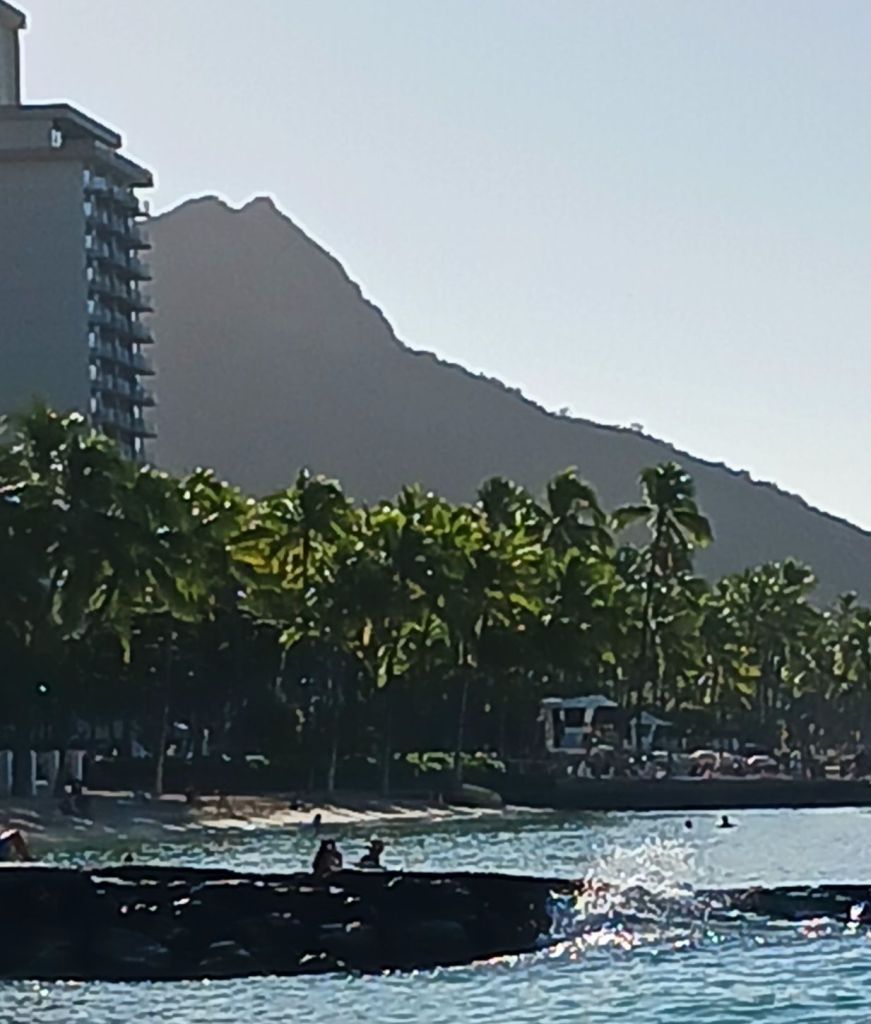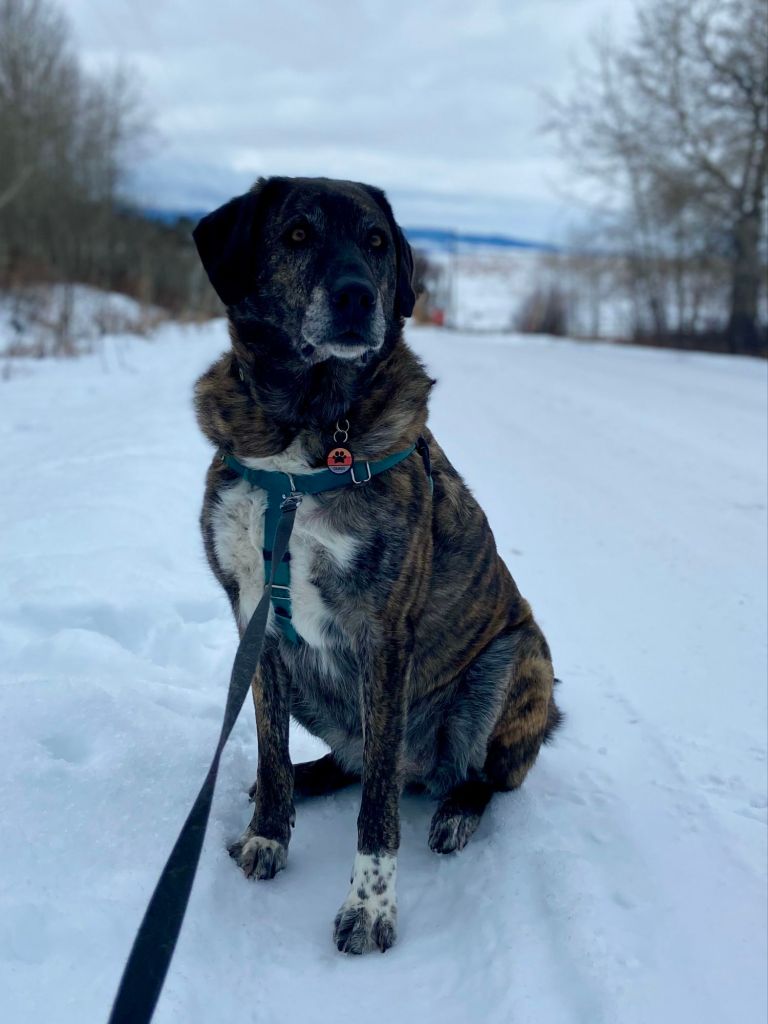January 29, 2024
We may never get to Prince of Wales Island, Alaska, but we can visit it in our minds.
Our six-hour flight from Honolulu to Seattle left three hours late, at 12:30 AM. I thought of Kenny Rogers’ “The Gambler,” which begins “on a train bound to nowhere …” Seattle would be our nowhere, on a gray dawn of fog and sheets of rain.
Reggie had the window. He appeared to be in his late twenties or early thirties. He looked out at the darkness, like the singer in Kenny’s lyrics. I was trapped in the center seat, too tired to sleep. First we talked weather. I mentioned I had read about temps in the 20s in our home town. Too bad we were leaving Hawaii, I said.
He answered: “I worked for Alaska Airlines in western Alaska, loading aircraft. It could get down to negative 60F. Sometimes you’d be out in it for a couple of hours.”
At that moment I felt small griping about the South Carolina cold snap. Sixty degrees below zero. “It’s not just cold,” he said. “It hurts.”
He talked about how to dress for -60F: layer over layer over layer to retain body heat, then something heavy on top. Even then you can’t stand it for long.
Reggie is a Prince of Wales native and a member of the ancient Haida tribe, which has lived for centuries on and around the Haida Gwali archipelago, formerly Queen Charlotte Islands, off the coast of British Columbia. He was on his way to his home in Ketchikan, Alaska, on Revillagigedo Island abutting Alaska’s Panhandle. Ketchikan is a bustling town of about 8,000, and famous for the world’s largest collection of standing totem poles. It’s known as a cute tourist destination, although I don’t know anyone who’s been there.
Never heard of Haida Gwali? Or the Queen Charlotte Islands? Neither had I. At home I got out my atlas and did some homework. Primitive ancestors of the tribe may have settled the area more than 12,000 years ago. Centuries later they defended their way of life against White traders and settlers and the Canadian government. Canada changed the name of the Queen Charlotte Islands to Haida Gwali in 2009. The tribe now claims ownership.
Reggie hails from Hydaburg on the western coast of Prince of Wales. The island is part of the Alexander Archipelago, which amounts to dozens of islands pocked by narrow bays and streams. Prince of Wales is about 130 miles long and 65 miles wide and, along with Revillagigedo, is deep within the Tongass National Forest, the country’s largest, at 17 million acres.
All this took me back fourteen years. In 2010 my son Michael and I arrived in Yellowknife, the provincial capital of Canada’s Northwest Territories, known for brutal cold. We then flew by seaplane 60 miles across trackless lakes-and-forest wilderness to a fishing camp. It was June, but the nights were freezing. Like the Tongass, the land stretches beyond the imagination.

Reggie would get to Prince of Wales from Ketchikan by ferry, a three-hour passage across the Clarence Strait. The Strait flows into the Dixon Entrance, a 50-mile-wide channel south of the island and north of Haida Gwali. The Strait is one of more than a dozen waterways of the Inside Passage, which extends from northwest Washington past British Columbia and the Alaska Panhandle to southern coastal Alaska. The circuitous routes of the Passage are used by cruise ships, commercial shipping, fishing vessels, ferries, and barges. Millions sail through each year.
Cruise ships depart Seattle and Vancouver to transit the Passage, offering glimpses of whales and mountain vistas. They drop passengers in Alaskan coastal places where they can buy souvenirs at shops owned by the cruise lines. The tours often include a train ride for one of dozens of see-Alaska-by-train packages.
Many long fervently to do this. The internet overflows with the deals. One of them, Road Scholar, has been created by Elderhostel which, as the name reveals, serves the white-haired community, providing “all-inclusive trips designed for ages 50+.” One of these is “Alaska Wildlife by Train.”
The pattern is cruise for four or five days to a coastal town like Seward then board a train for the 470-mile trek to Fairbanks in the center of the state, and go on to national parks.
The region seems a chaotic accident of creation, rugged chunks of wilderness broken from North America to float free into the Pacific. Thousands of islands of the Alexander Archipelago, some only spits of rock, lie along the Pacific Ring of Fire, the chain of jumbled and unbalanced tablets of the earth’s crust beneath the bottom of the Sea of Alaska that threaten a cataclysmic quake someday or any day.
Hydaberg, population about 400, is named for the Haida people. The island’s economy is built around tourism, logging, fishing, and mining. The other piece is the Tongass, which includes 19 designated wilderness areas extending north beyond Juneau and eastward to the British Columbia boundary.
Reggie talked about it with affection although apart from the woods it’s not much of a place. Hydaburg is the smallest of the Prince of Wales settlements, Klawock, Craig, and Hollis claim a couple thousand residents. The island is a bystander in the northbound race of the cruise ships and the 50-plus crowds. The vast reaches of Tongass don’t have the appeal of the whales and nature talks.
“If you go, rent a car and drive around,” Reggie said. “Make your own schedule to see things. In September you can see the northern lights. But don’t make it later than that.”
We have often driven around. Maybe we will. Hydaberg. Prince of Wales Island. Ketchikan. Revillagigedo, broad stretches of rocky Pacific shoreline and dense dark forest, barely touched by God. Trekking wild places enlivens and soothes the soul. Now is the right time, as it is, always.








